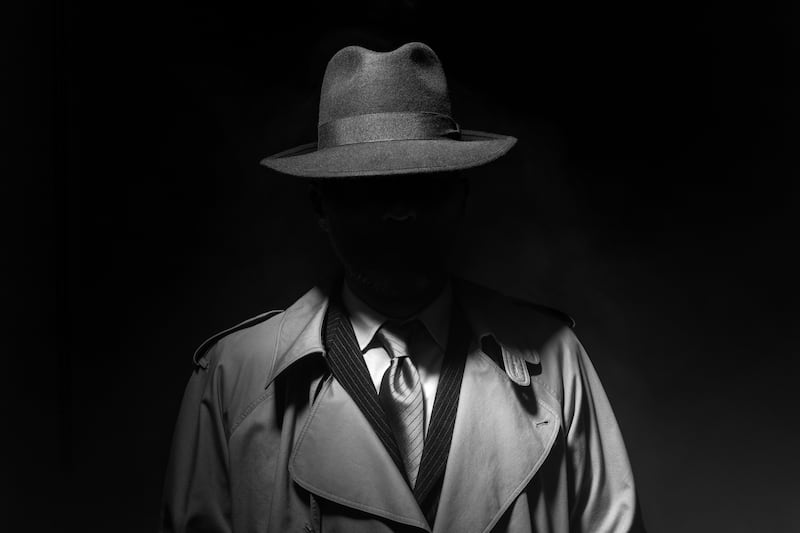Some weeks ago I was invited for coffee with the French embassy’s new press officer, a young man by the ungallic name of Peadar Kearney. When we met over Americanos, I asked if he was any relation to the ballad-writing Peadar Kearney, lyricist of Amhrán na bhFiann, The Bold Fenian Men, and many other songs.
Sure enough, he was his great-grandson. Which meant he is also related to those other members of republican royalty, the Behans: Brendan’s mother Kathleen Kearney having been a sister of the balladeer.
Anyway, in his new role as publicist for our “nearest EU neighbours”, he was drawing my attention to certain events of mutual interest. These included the bicentenary of one General Humbert, who in 1798 briefly established the Republic of Connacht before going on to other theatres of war and dying at New Orleans in 1823.
As I told Peadar Jnr, Humbert was somebody about whom I felt unusually well qualified to speak: a subject to which we’ll return shortly.
Former MEP and Greenpeace activist Grace O’Sullivan’s Antarctic legacy is at risk
‘Stop, that’s my case’ - Áine Ryan on adventures on the Westport non-express
Flying columnist – Frank McNally on a lightning visit to Leeside
The Death of Reilly - Frank McNally on the demise of ‘Reilly, Ace of Spies’ 100 years ago
***
Since that coffee, I’ve been reading A Bit of a Writer: Brendan Behan’s Collected Short Prose, edited by John Brannigan. Amid which anthology, drawn mostly from a weekly column for The Irish Press in the early 1950s, is a piece headlined “Peadar Kearney Ballad Maker”.
Describing his uncle as a typical Dublin working-class republican of his time, nationalist and internationalist, Behan wrote:
“He was distinctly under the impression that there was a connection between liberty and speaking Irish, between winning a strike and winning a hurling match, between the French Revolution and the Four Masters, between Fionn MacCumhaill and Theobald Wolfe Tone.”
In the context of Kearney’s lyrics, Behan also quoted the old saying: “Let me make the Nation’s ballads and I care not who makes its laws.” So successfully had his uncle’s songs infiltrated the popular mind, Behan wrote, that during his own lifetime, at least one came to be considered a traditional ballad of unknown authorship.
Writing about The Three Coloured Ribbon for The Bell magazine, Donagh MacDonagh (son of the 1916 leader) had suggested it was “anonymous”.
MacDonagh should have known better, Behan thought. But he presumed Kearney would consider it a compliment because: “What’s a ballad for? Only to go around like a five-naggin bottle at a wake, and so far round it’s forgotten who first provided it.”
Behan also likened his uncle to another, more famous anthem writer: “The French Revolution owes much to Rouget de Lisle and his ‘Marseillaise’. The Irish Revolution owes quite as much to Peadar Kearney and his ‘Soldier’s Song.”
Then, in a detail that may be appreciated in the French embassy’s press office, he suggested the comparison with de Lisle would have pleased Kearney: “Many’s the time I heard him, in my childhood on the northside, fill the kitchen with the ‘Marseillaise’: “Allons enfants de la patrie, le jour de gloire est arrivé . . .”
***
There are no naggins of whiskey passed around during The Holy Hour: A Requiem for Brendan Behan, the centenary celebration of the writer now ongoing at Museum of Literature Ireland.
Or at least there was none when I visited. But the exhibition’s theme does touch on both alcohol and religion: “Holy Hour” being a thing you used to do in Ireland’s pubs (with the connivance of the owner) as well as its churches.
Chief celebrant of the audio-visual presentation, Patrick McCabe, presents Behan in life and afterlife. The venue for the latter may be heaven. But since McCabe has Patrick Kavanagh – a man with whom Behan had fiercely hostile relations – leading him on a tour of eternity, it’s probably Purgatory for both. Well worth a visit, the show continues until October.
***
Getting back to another of 2023′s anniversaries, I must be one of the few Irish people to have visited General Humbert’s hometown and indeed the farm on which he grew up.
It was Bastille Day 2018. And not only had my late friend Steve Dunford insisted I join him on the trip to the Vosges Mountains, he also fitted me out in one of his period military costumes (we were the same size): a blue French one from the Napoleonic wars.
So dressed, and further weighed down with authentic rifles and swords of the era (but also rehydrating furtively from 21st-century plastic bottles), a group of us marched several kilometres through the Vosgian foothills to Humbert’s farmyard, in sweltering heat.
At the farm we drank wine with locals who, as French people do on Bastille Day, burst into a lusty rendition of the Marseillaise.
Moments later, after a huddle among the officer class and a whispered command, we surprised ourselves and our hosts by responding with an equally unapologetic Amhrán na bhFiann. No doubt they were being diplomatic, in best French style. But some of the natives told us afterwards they had been deeply moved.

















